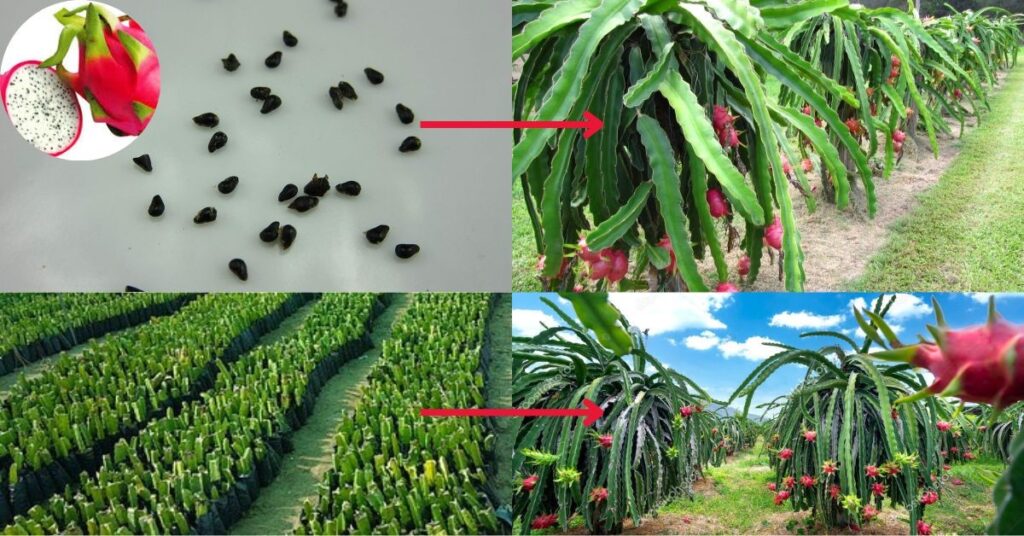In the realm of agriculture, where the delicate dance between nature and nurture dictates success, the concept of circadian airflow emerges as a pivotal yet often overlooked factor in the cultivation of dragon fruit plants. In this comprehensive exploration, we delve into the nuances of circadian airflow and its profound impact on the health, growth, and productivity of dragon fruit plants.
Table of Contents

Understanding the Dynamics of Circadian Airflow
At its core, airflow refers to the rhythmic patterns of air movement that occur within a given environment over 24 hours. In the context of dragon fruit cultivation, optimising circadian airflow involves creating conditions that facilitate the movement of air around the plants in a manner that promotes growth and minimises the risk of disease.
The Role of Air Movement in Plant Physiology
Air movement plays a crucial role in various physiological processes within plants, including transpiration, nutrient uptake, and gas exchange. For dragon fruit plants, which thrive in tropical environments, adequate airflow is essential for regulating temperature, reducing humidity, and preventing the buildup of pathogens.
Factors Influencing Circadian Airflow
Several factors influence the dynamics of circadian airflow in dragon fruit orchards, including topography, canopy structure, wind patterns, and microclimate variations. Understanding these factors is key to implementing strategies that optimize airflow and create a conducive environment for plant growth.

Strategies for Optimizing Circadian Airflow
Canopy Management
Proper canopy management is essential for optimizing airflow in dragon fruit orchards. Pruning excess foliage and maintaining an open canopy structure facilitate air movement throughout the orchard, reducing the risk of stagnant air pockets where pathogens can thrive.
Strategic Plant Spacing
Optimal plant spacing plays a crucial role in promoting efficient airflow. Ensuring adequate distance between plants allows for better air circulation, reducing the likelihood of fungal diseases and promoting uniform growth and fruit development.
Windbreaks and Shelterbelts
Introducing natural or artificial windbreaks and shelterbelts can help regulate airflow within the orchard. These barriers mitigate the impact of strong winds, creating a more stable microclimate that fosters optimal growth conditions for dragon fruit plants.
Microclimate Management
Managing microclimates within the orchard involves strategic placement of plants and structures to harness natural airflow patterns. By identifying areas of high and low airflow, growers can optimize planting locations and minimize the risk of temperature extremes and humidity buildup.
The Impact of Circadian Airflow on Plant Health and Productivity
Disease Prevention and Control
Optimizing airflow is instrumental in preventing the onset and spread of fungal diseases and bacterial infections. Adequate air movement helps dry foliage, reducing the conditions favorable for pathogen growth and minimizing disease pressure on dragon fruit plants.
Temperature Regulation
Efficient airflow assists in regulating temperatures within the orchard, especially during periods of extreme heat. By dissipating heat and cooling the surrounding environment, airflow mitigates stress on plants and maintains optimal growing conditions.
Enhanced Pollination and Fruit Set
Optimal airflow promotes natural pollination by facilitating the movement of pollen between flowers. Improved pollination rates result in higher fruit set and yield, contributing to overall orchard productivity and profitability.

Innovations in Circadian Airflow Management
Technological Solutions
Advancements in agricultural technology, such as automated weather monitoring systems and climate-controlled structures, offer innovative solutions for managing airflow. These tools provide real-time data and insights that enable growers to make informed decisions and optimize growing conditions.
Vertical Farming Techniques
Vertical farming techniques, including trellising and vertical stacking systems, maximize space utilization and airflow efficiency in limited growing environments. By capitalizing on vertical space, growers can optimize plant density while ensuring adequate air circulation for each plant.
Conclusion: Harnessing the Power of Circadian Airflow for Dragon Fruit Excellence
In conclusion, the optimization of circadian airflow is integral to the success of dragon fruit cultivation. By implementing strategies that enhance air movement within the orchard, growers can create an environment that promotes plant health, minimizes disease pressure, and maximizes productivity. As the agricultural landscape evolves, the quest for innovative solutions to optimize circadian airflow remains a cornerstone of modern farming practices, ensuring a sustainable future for dragon fruit production and the broader agricultural industry.
